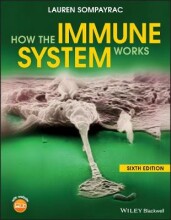NBA8 Food matrix and digestion: proteins
28 important questions on NBA8 Food matrix and digestion: proteins
What are the physiological aspects related to protein digestion
- Amount of protein digested and amino acids (especially essential amino acids) absorbed; Caloric content of foods; Amount of proteins that enters the colon
- Rate of protein digestion, peptides generation and appearance of AA in plasma: AA utilization in peripheral tissues
- Generation of bioactive peptides and their stability
- Allergenicity of food protein
Protein in the food matrixes
- Protein organised in compact bodies within cell walls in storage seeds
- protein aggregates forming a continuous matrix embedding other solids and air (e.g. Cheese)
- covalently or physically cross-linked system incorporating water (geels, e.g. Tofu, omelette)
- Continuous networks embedding other solids and air bubbles (bread, pasta, bakery products)
- protein in solution (e.g. Drinks; cell cytoplasm)
- proteins in micellar aggregates dispersed in water (e.g. Milk)
- protein organised in fibrous structures (meat, fish)
- proteins at the interface of natural emulsions (e.g. Liposomes in eggs, oil bodies in plants)
What is the effect of primary structure [protein molecular structure and digestibility]
- Proteins may be resistant to digestion because it has few cleavage sites for proteases (e.g. High proline and glutamine peptides in wheat)
- Generation and stability of bioactive peptides (immunomodulatory, anti-hypertensive, antimicrobial, etc.) or immunological peptides (gluten peptides and coeliac disease)
- Higher grades + faster learning
- Never study anything twice
- 100% sure, 100% understanding
What is the effect of secondary structure [protein molecular structure and digestibility]
- triple helix of collagen
- alfa-helix of proline sequences (gliadins, ordains, secalins) in cereals
- beta-barrel of secalin (legumes)
- random coils (RC) easier to digest. Beta-1 sheets harder to digest
What is the effect of tertiary structure [protein molecular structure and digestibility]
- cleavage sites are buried within secondary, tertiary and quaternary structure
protein are denatured by:
- Heat (at T>Tden)
- High hydrostatic pressure
- mechanical forces
- acids
- emulsifieers
- reducing agents
What is the effect of tertiary structure [protein molecular structure and digestibility]
- cleavage sites are buried within secondary, tertiary and quaternary structure
protein are denatured by:
- Heat (at T>Tden)
- High hydrostatic pressure
- mechanical forces
- acids
- emulsifieers
- reducing agents
What happens with thermally-induced aggregation/cross-link
[protein supramolecular structure ans digestibility]
image
native albumen (-SH) --> denaturation --> crosslinking (S-S)
raw egg proteins are almost no (<50%) digestive
- Cooking decreases digestibility of sorghum proteins
- Formation of S-S cross-link at the periphery of the protein body
- Digestibility of sorghum proteins improves when cooked in presence of reducing agents (e.g. Cysteine)
What are the effects of cooking on meat proteins?
- Denaturation of proteins; increase in hydrophobicity; aggregation
- Shrinkage of the sarcomere; compaction
Nog doen 6 slides over thermally induced aggregation/cross-link
How does the Maillard reaction occur?
When the Maillard reaction occurs lysin will convert into:
- Lysinoalanine (LAL)
- pentosidine
- pyrraline
- Ne-(carbozymethyl)lysine
- Nutritional quality compromised!
- Hindrance of relevant cleavage sited for proteases: reduction in dig
estibility
- Bread crust; milk powders; egg powders; roasted cocoa, coffee and nuts; seared meat, etc
What are the consequences of the Maillard reaction?
- Glycation-induced unfolding
- high access
- partially blocking trypsin cleavage sites
- unimolecular 'micelles'
- supramolecular self-assembled micelles
- limited access
- limited access
- blocking trypsin cleavage sites
Protein supramolecular structure and digestibility; experiment in mini-pigs.
- Different gastric emptying time; different kinetics of AA absorption
- Diffusivity of pepsin and acid into the gel
What is the concept of fast and slow proteins?
Fast proteins stimulate postprandial muscle protein accretion better then slow proteins: beneficial for elderly and athletes
Whey proteins and casein; the concept of fast and slow proteins. What is/happens witch whey and what with casein?
WPI is soluble and rapidly emptied;
CAS clots and is slowly emptied
Whey proteins and casein; the concept of fast and slow proteins. What is/happens witch whey and what with casein?
WPI is soluble and rapidly emptied;
CAS clots and is slowly emptied
What is the digestion of the normal sorghum line and what is the digestion of the mutant sorghum line?
- slower digestion
the mutant sorghum line
- faster digestion: higher surface; more loosen structure?
Digestion of Soybean proteins, where needs to be thought of?
Rapidly digested proteins from layer of fractured cells
Slowly digested proteins locked into intact cells
What is the plant structure and total energy content of the following diets?
- western diet
- mediterranean diet
- vegan diet
mediterranean diet - middle middle
vegan diet - high high
Comparative composition of plant cell walls [type 1 type 2]
- primary wall:
- cellulose
- pectin
- xyloglucan
- middle lamella:
- pectin
Type 2: cereals, grasses
- primary wall:
- cellulose
- arabinoxylans
- beta-glucans
- phenolics
- Middle lamella:
- no pectin
What is the influence of
- milled and then boiled
- boiled and then milled
- Proteins are more exposed
Boiled and then milled
- Proteins are less exposed
What are the effects of heat treatments and ripening?
Ripening: pectin methyl esterase (PME) and Polygalacturonase (PG)
Dietary modulators of proteins digestion: Dietary fibre
- Inhibition of proteolytic enzymes
- bulking effect and increased rate of passage (insoluble DF)
- digesta viscosity (soluble fibre)
- slow down rate of gastric emptying
- slow down propulsion and mixing
- reduce diffusion coefficients for proteins, proteases and peptides/AA
- Effect of DF in a specific food
- encapsulation in cell wall
- modification of protein network (e.g., gluten in wholemeal bread)
Dietary modulators of proteins digestion: tannins
- Condensed and hydrolysable tannins
- Seeds, grains and nuts, wine, tea, cocoa
- concentrated in coat, especially of dark colour, and skin (e.g. Nuts)
- mechanism of action
- complexation and precipitation of digestive enzymes and/or dietary proteins. Related to MW
- effect on epithelium: reduced absorption of AA
- Tannins levels reduced by:
- milling and refining (through elimination of coat and skin)
- fermentation (tannase)
- modest effect of heat
Dietary modulators of proteins digestion: trypsin inhibitors
- occurs in legumes, cereals and potatoes, eggs (ovomucoid and ovoinhibitor)
- problem relevant for soy and animal feed
- reduces protein digestibility and induces pancreas insufficiency
- polypeptides or proteins:
- the Kunitz inhibitor family
- the bowman-bird inhibitor family
- mostly destroyed by thermal treatment
Dietary modulators of protein digestion: phytates
- occur in grains (cereals, legumes and nuts)
- concentrated in the germ, pericarp or bran
- inhibition of proteases or complexes with dietary proteins
- modest effect of heat (which inactivates endogenous phytases!)
- phytate levels reduced by:
- milling and refining (through elimination of phytate-rich layers)
- germination and fermentation (by hydrolysis by endogenous or microbial phytases)
- soaking in acidic medium
Which of the following statements on protein digestibility is wrong?
- Protein digestibility is < in whole soybean than in flour
- Heating of proteins increases their digestibility
- Denaturation of proteins increases their digestibility
- Phytates and tannins are only found in plants
Where would you expect the highest protein digestibility?
- raw soybeans
- cooked soybeans
- raw soybean flour
- cooked soybean protein isolates
The question on the page originate from the summary of the following study material:
- A unique study and practice tool
- Never study anything twice again
- Get the grades you hope for
- 100% sure, 100% understanding





























